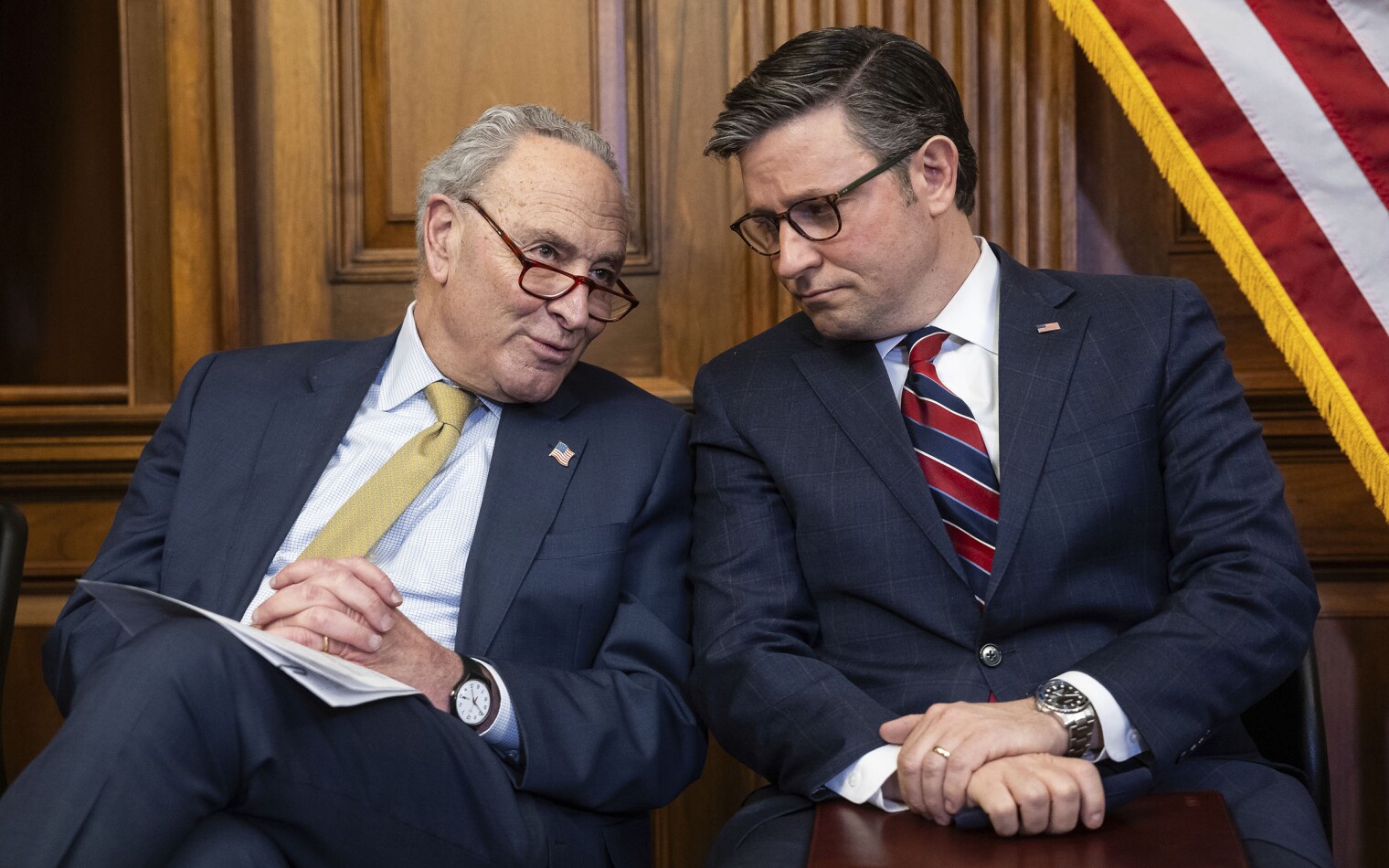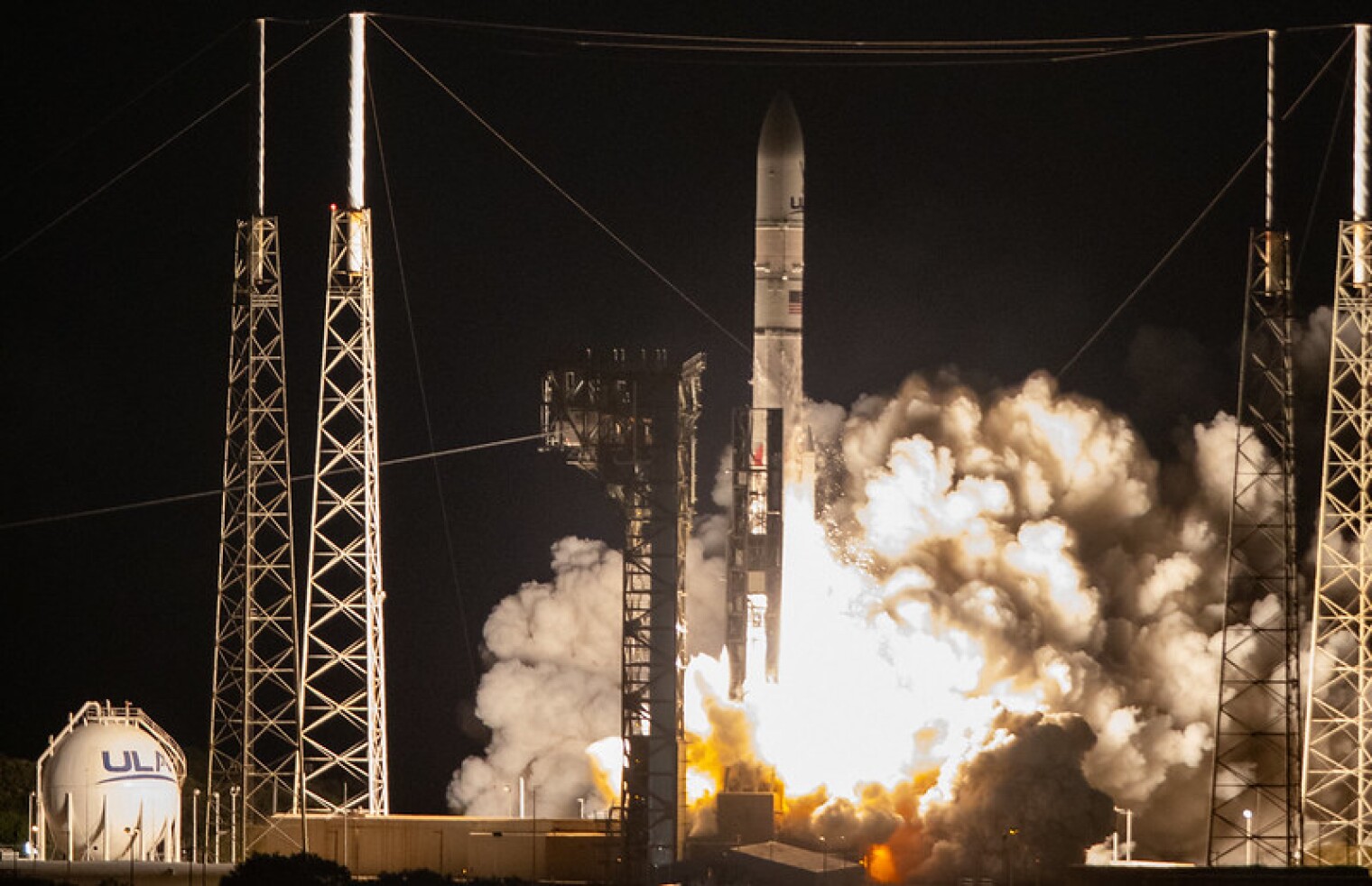| |
| FYI: Science Policy News from AIP |
| THIS WEEK |
|
|
|
|
|
|
| What’s Ahead |
 |
| Senate Majority Leader Chuck Schumer (D-NY) and House Speaker Mike Johnson (R-LA). (Francis Chung / Politico via AP Images) |
Congress Takes Key Step Toward Finishing FY24 Budgets
Over the weekend, House and Senate leaders announced they have agreed on topline limits for defense and non-defense spending in fiscal year 2024, paving the way to finalize appropriations legislation that allocates the money across agency programs. The agreement holds non-defense spending roughly flat for the year, consistent with the budget cap deal negotiated last spring. While House Republicans have been pushing for broad cuts to non-defense spending, House Speaker Mike Johnson (R-LA) agreed to set that goal aside for the moment in exchange for Congress rescinding additional unspent funds that were slated for tax enforcement and pandemic recovery programs. Now, appropriators must revise each of the 12 bills that together fund the federal government to reflect the new spending limits.
Notably, the spending proposals that Senate appropriators drafted last year included around $14 billion in “emergency” spending to bolster priority programs. This emergency spending is not permitted in the final deal, which could make it harder to achieve their desired spending levels for these programs. Among their emergency proposals, Senate appropriators had included an extra $50 million for facilities repair at the National Institute of Standards and Technology, $420 million for research programs at the National Science Foundation, and $300 million for the Department of Energy’s Office of Nuclear Energy. Meanwhile, the House’s spending proposals went well below the budget caps and included various policy provisions that Democrats objected to, such as broad limits on workforce diversity initiatives. Democratic leaders are insisting that any “poison pill” policy changes be removed from the final legislation, though Republicans are pledging to still pursue certain policy changes.
Competition Open for Fermilab Operations Contract
The Department of Energy is now accepting proposals for the contract to manage and operate the Fermi National Accelerator Laboratory — the foremost U.S. laboratory for high-energy particle physics research. Fermilab is funded almost entirely by the DOE Office of Science and has a 6,800-acre site in the suburbs of Chicago with about 2,100 employees. The lab has been managed since 1967 by the Universities Research Association, a consortium of research universities, and in 2007, the last time the contract was put up for competition, URA partnered with the University of Chicago to form the lab’s current contracting entity, Fermi Research Alliance LLC. Parties interested in taking over the lab will have until March 4 to submit their proposals. URA and the University of Chicago have expressed interest in bidding to continue operating the lab. Among the other prospective bidders is Associated Universities, Inc., which operates astronomical observatories on behalf of the National Science Foundation. A pre-proposal conference will take place on Thursday. In recent years, Fermilab management has come under scrutiny in part due to large cost increases on its flagship neutrino project and a serious worker injury that delayed work on a major accelerator upgrade.
Astronomers Gather in New Orleans for AAS Meeting
The American Astronomical Society’s winter meeting started on Sunday in New Orleans and will feature a range of policy-related events. Among the plenary speakers is Lia Epperson, a law professor specializing in civil rights and education policy, who will also participate in a panel discussion on how the Supreme Court’s 2023 ban on race-based affirmative action at universities might affect admissions to graduate programs in astronomy. Aspects of the policy environment affecting the astronomy workforce will also be explored through sessions on immigration policy, poverty, and NASA’s new inclusion plan requirement for certain grant applications. Other policy-focused sessions will cover the State Department’s space diplomacy efforts, options for expanding U.S.-Africa collaboration in astronomy, and ways that super-heavy launchers could accelerate the timeline for deploying the next generation of flagship space telescopes.
Study Begins on Manhattan Project Effects on Veteran Health
A National Academies committee that will assess the feasibility of determining the effects of the Manhattan Project on veterans’ health will hold its first meeting on Wednesday. The committee will look into which data are available on the veterans who worked on the nuclear weapons R&D project, including locations served, types of potential exposure, demographics, military characteristics, and health outcomes, including cause of death. The assessment will determine whether it will be possible to carry out the full epidemiologic study that Congress mandated through legislation enacted in 2022. If a full study is feasible, the committee will recommend a design framework and provide an estimate of the time and money required to complete it.
|
|
| In Case You Missed It |
 |
| The first mission from NASA’s Commercial Lunar Payload Services program launched on Jan. 8 aboard the United Launch Alliance’s new Vulcan rocket. (Isaac Watson / NASA) |
First US Commercial Lunar Lander in Trouble
Private venture Astrobotic’s Peregrine lunar lander launched from Cape Canaveral aboard a United Launch Alliance Vulcan rocket early Monday morning, carrying five scientific instruments for NASA. Although the launch was a success, Astrobotic reported that an issue with the lander’s propulsion system prevented it from orienting its solar panels toward the Sun. An improvised maneuver successfully reoriented the panels, but Astrobotic soon after concluded that a critical amount of propellant was lost. As of publication time, the company was assessing alternative mission options and has “prioritized maximizing the science and data we can capture.”
The launch is the first for the Vulcan rocket as well as for NASA’s Commercial Lunar Payload Services program, which contracts with commercial providers to deliver science and technology payloads to the lunar surface. The agency established the program in 2018 with the expectation it would transport about two payloads per year, potentially as early as 2019. The Peregrine contract was among the first that CLPS issued in 2019 and had an initial value of about $80 million that has now increased to $108 million. The goal was originally to launch Peregrine in 2021, but it and all other CLPS launch target dates have slipped repeatedly. The broad aim of CLPS has been to kickstart a lunar services industry, with NASA as just one customer among many. Another CLPS contractor, Intuitive Machines, is slated to launch its IM-1 lunar lander aboard a SpaceX Falcon 9 rocket in mid-February.
First CHIPS Manufacturing Awards Announced
The Commerce Department announced last week that it had reached a preliminary agreement to provide the company Microchip Technology with $162 million to help it expand microcontroller manufacturing in the U.S. The announcement follows a similar, $35 million preliminary agreement reached in December that will help the company BAE Systems modernize its microelectronics manufacturing center in New Hampshire. If finalized, these will be the first two awards from the manufacturing incentive programs created by the CHIPS and Science Act. The department is still laying groundwork for making awards from the flagship semiconductor R&D-focused programs also created by the act. Late last year, the Commerce Department announced that a new nonprofit entity, Natcast, has been formed to operate the planned National Semiconductor Technology Center.
NSF Reclassifies FFRDC R&D Funds as Intramural
The National Science Foundation announced last week that it is reclassifying Federally Funded Research and Development Centers as intramural performers of R&D. Since their establishment in the 1940s, FFRDCs have been treated as external performers of R&D because, while they are owned by the federal government, they are operated by nongovernmental entities. However, NSF has concluded that the FFRDCs receive such a significant portion of their budget from the federal government that they do not operate independently of federal control. NSF reports that after accounting for the reclassification, the total federal expenditure on intramural R&D was $86.5 billion in fiscal year 2021, $14.8 billion higher than under the prior accounting method.
|
|
| Upcoming Events |
All events are Eastern Time, unless otherwise noted. Listings do not imply endorsement. Events beyond this week are listed on our website.
Monday, January 8
Tuesday, January 9
Wednesday, January 10
Thursday, January 11
Friday, January 12
Know of an upcoming science policy event either inside or outside the Beltway? Email us at fyi@aip.org.
|
|
| Opportunities |
|
Deadlines indicated in parentheses.
Job Openings
Solicitations
Know of an opportunity for scientists to engage in science policy? Email us at fyi@aip.org.
|
|
| Around the Web |
|
News and views currently in circulation. Links do not imply endorsement.
White House
Congress
Science, Society, and the Economy
Education and Workforce
Research Management
Labs and Facilities
Computing and Communications
Space
Weather, Climate, and Environment
Energy
Defense
Biomedical
International Affairs
|
|
|
| |
| This message is sent to you because you signed up for one of our newsletters. To manage your AIP email preferences and newsletter subscriptions ( add or remove ), please click here. Or to automatically unsubscribe from all AIP emails, click here. As a 501(c)(3) non-profit, AIP is a federation that advances the success of our Member Societies and an institute that engages in research and analysis to empower positive change in the physical sciences. The mission of AIP (American Institute of Physics) is to advance, promote, and serve the physical sciences for the benefit of humanity. |
|
| © 2025 American Institute of Physics. |
AIP, 1 Physics Ellipse, College Park MD 20740-3841
301.209.3100 - newsletters@aipcomm.org |
|
|